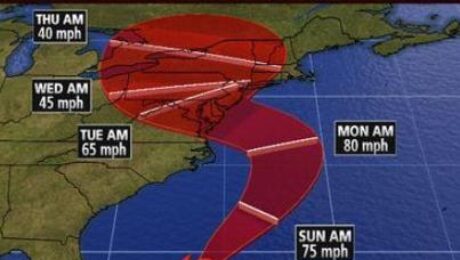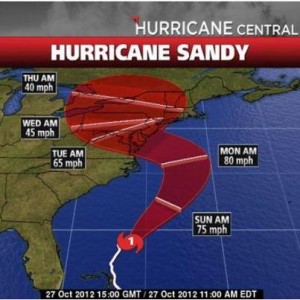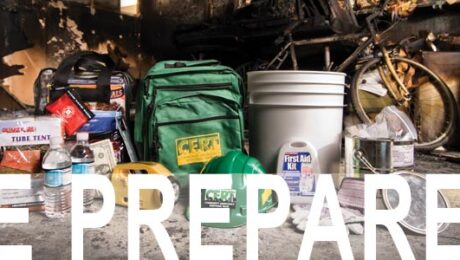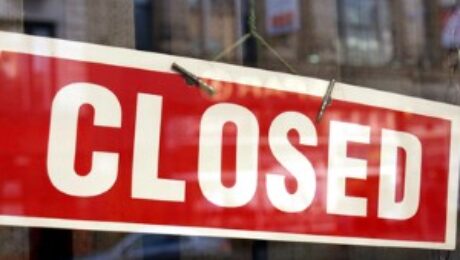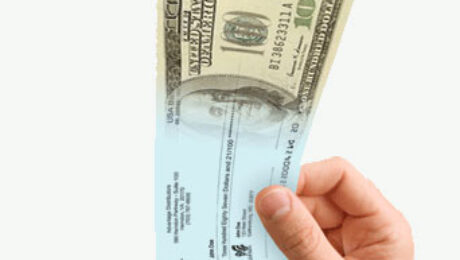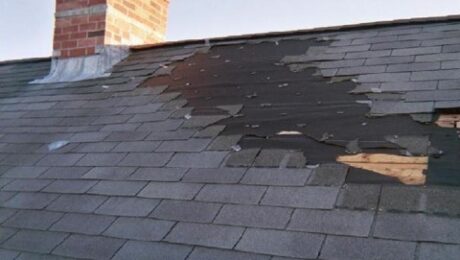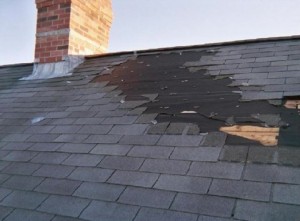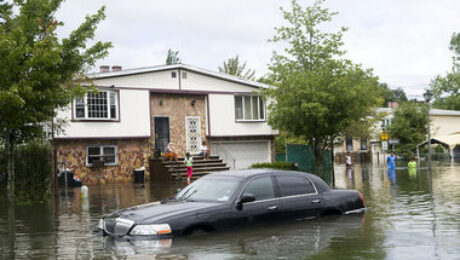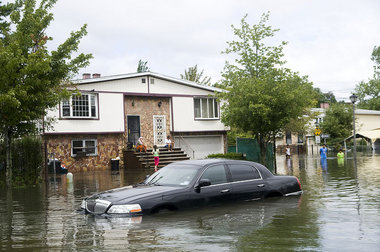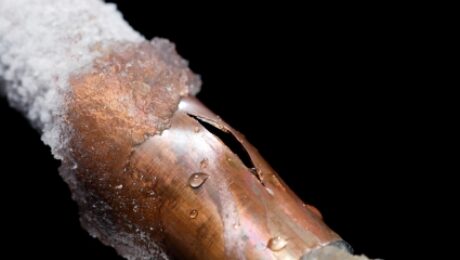1. Stay Indoors, ideally in a rooms without windows that could be broken
2. Use flashlights in the dark if the power goes out. Do NOT use candles.
3. Don’t walk on beaches, riverbanks or in flood waters.
4. Continue listening to local area radio, NOAA radio or TV stations for the latest information and updates.
[representyouinsurancepolicies] [footer1]
- Published in Blog
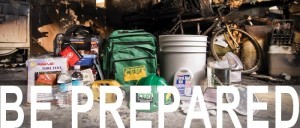 Right before the storm – Be Prepared:
Right before the storm – Be Prepared:
1. Know the difference between a Hurricane Watch and a Hurricane Warning
-A Watch is when hurricane conditions are threat within 48 hours;
-A Warning is when conditions are expected with 36 hours.
2. Listen to local area radio, NOAA radio or TV stations for the latest information and updates
-NOAA Weather Radio is a nationwide network of radio stations broadcasting continuous weather information directly from the nearest National Weather Service office on the VHF public services band, requiring a compatible receiver or scanner, as they cannot be heard on a simple AM/FM radio receiver.
3. Be prepared to evacuate at a moment’s notice.
-Review your family’s plan with all household members, which should include your evacuation route and destination.
4. Check emergency kit and replenish any items missing or in short supply. Keep it nearby.
-Fill your car’s gas tank
-Turn off propane tanks and unplug small appliances
-Bring inside anything that can be picked up by the the wind (bicycles, lawn, furniture)
-Close windows, doors, and hurricane shutters
-If you don’t have hurricane shutters, board up all windows and doors with plywood.
(Do not tape glass. Taping does not prevent glass from breakjing and takes critical time from more effective preparedness measures.
-Turn refrigerators and freezers to the coldest setting, and keep them closed as much as possible.
(This will help perishable food keep longer should the power go out)
-Clean and sanitize water-storage containers.
(Clean surfaces thoroughly with soap and water, then rinse)
(For containers, add approximately 1 tablespoon of unscented liquid chlorine bleach per gallon of water to make a bleach solution)
(Close the container and shake the bleach solution thoroughly, allowing it to contact all inside surfaces)
(Keeping the container closed, let the bleach solution stand for 30 minutes, and then rinse with clean drinking water.)
(Allow the container to air dry)
- Published in Blog
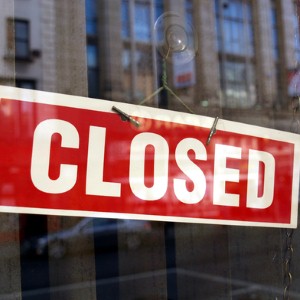 When a commercial property suffers a loss such as a fire, hail, windstorm, vandalism, or equipment damage, it is very important to have business income insurance. This type of coverage is not generally sold as a stand-alone policy, but rather an extra policy provision. Business income insurance keeps your business from having to close its doors due to these unexpected events. When a loss happens to your commercial property, you are still obligated to pay the bills such as employees, rent or mortgage payments, advertising, suppliers, taxes, or even yourself. Business income insurance can keep the capital flowing through your company in the event that a loss occurs. It may also help you maintain your business continuity strategy, keep your business afloat if you are required to close for a short time, pay for loss net income and continuing expenses like mortgage, advertising, taxes, and salaries, and pay your relocation and advertising fees if you must set up at a temporary site.
When a commercial property suffers a loss such as a fire, hail, windstorm, vandalism, or equipment damage, it is very important to have business income insurance. This type of coverage is not generally sold as a stand-alone policy, but rather an extra policy provision. Business income insurance keeps your business from having to close its doors due to these unexpected events. When a loss happens to your commercial property, you are still obligated to pay the bills such as employees, rent or mortgage payments, advertising, suppliers, taxes, or even yourself. Business income insurance can keep the capital flowing through your company in the event that a loss occurs. It may also help you maintain your business continuity strategy, keep your business afloat if you are required to close for a short time, pay for loss net income and continuing expenses like mortgage, advertising, taxes, and salaries, and pay your relocation and advertising fees if you must set up at a temporary site.
When a loss happens to your commercial property, there is a lot of documentation the must be prepared for your insurance company in order to collect money for this business interruption. On average, property owners do not know where to begin. All American Public Adjusters, Inc is licensed and bonded to review your policy, review and prepare all of your records to present to the insurance company to get you compensated as quickly as possible. Because time is money, it is important to have an expert help you in this time of need. Call All American Public Adjusters, Inc if you have suffered a loss to your commercial property.
[footer1]- Published in Blog, In the News
7 Tips to Preparing Your Florida Coastal Condominium for the Hurricane Season and the specific steps to take to
FOR IMMEDIATE RELEASE / PRURGENT
7 Tips to Preparing Your Florida Coastal Condominium for the Hurricane Season”, a free report, has just been released by Florida condominium construction expert Robert Fitzpatrick, P.E.
The Hurricane season is just starting and predictions indicate it could be a rough one. You need to start getting ready now. Prepare for two things; water coming in and power going out. Here are some things to check.
1. If You Have Hurricane Shutters
– Check the anchorage (screws into the walls, ceiling or floor). Make sure they are tight and there is no rattle. Shutters that blow off won’t protect you and one of the biggest causes of shutter failure is insufficient or improper anchorage. They should be anchored in reinforced masonry that has grouted cells or into reinforced concrete or wood. If anchors are loose or rattle, they can fail from the buffeting winds. Shutters should not be attached to Exterior Insulated Finish System (EIFS) (synthetic stucco on light gage steel studs). If the shutters or the anchors rattle or appear loose, call the shutter company and have them install the next larger diameter size or back them out and epoxy them back in.
– When you are comfortable with the shutter anchorage, make sure the shutters open and close properly and that the weather stripping or gaskets are still pliable and resilient. Deteriorated gaskets will rub off on your fingers when they should be replaced. They shouldn’t be cracked. If the shutters do not open and close well, try WD 40 or Silicone garage door opener spray on the hinges and then open and close them a few times to get the oil worked around all the hinges. If the shutters aren’t working up to par, or the gaskets are worn, call a shutter company to have them checked and serviced.
2. If You Don’t Have Hurricane Shutters
– Get buckets and towels staged by the sliding glass doors to soak up the water that will come in. You can stuff beach towels in the sliding glass door tracks to absorb water as it enters and then squeeze the water into buckets. This is a family operation. One person removes the wet towels and gives to the squeezer and puts in dry towels. The squeezer squeezes the water into the buckets. The bucket crew transports the bucket to the toilette and brings back empty buckets and someone else is drying towels in the dryer. Everyone hopes that this doesn’t have to go on all night.
– There is product called the “water dog” or something like that. It’s a cylindrical foam tube in a stocking that is made to help seal the sliding glass door when wedged in the door track between the threshold riser (or back dam) and the door panel. Reports have it they are somewhat effective in reducing (not eliminating) water penetration.
– Next year, get shutters or check out sliding glass doors that have a very low air infiltration rate. This helps lower the risk of water penetration.
3. Furniture and Electronics
– If water could damage it, get your stuff off the floor. Raise it on some blocks a few inches. If you have carpet, you can leave it on the floor to soak up the water as it comes in or peel it back in a futile attempt to save it and try to mop up the water as it comes in. You will need more bucket carriers and you will lose. Mother Nature almost always wins.
4. Exterior Wall Joints
– Check around all the exterior wall penetrations, ie; wall mounted light fixtures, dryer vents, electrical outlets, TV cable cords, rain gutter attachments and, of course, windows and sliding glass doors. If these areas do not have a continuous bead of sealant around the perimeter, buy some exterior waterproofing sealant in a tube, cut the tube so you have a nozzle opening of a 1/4” diameter or a little larger, and apply a continuous bead of sealant around the perimeter of the fixture to the wall. Wipe the fixture and the wall first with a wet rag to clean the surface, let it dry, then seal.
– If it is caulked, see if the sealant around these items is still adhered. If you can peel the sealant off the wall, pull it completely off and re-caulk. When you caulk, try to get about ¼ inch of caulk on each surface.
5. Balcony or Patio
– Patio chairs and tables should be folded up and brought inside. Potted plants should be brought in. Shade umbrellas should also be taken down. During a hurricane, most damage is caused by wind-borne debris. Check TV satellite dishes to make sure they are rigidly secured
6. EIFS Skinned Buildings (synthetic stucco on metals studs)
– If you live in an EIFS skinned building (synthetic stucco on metals studs), evacuate and take any valuables with you. No kidding. Imagine your Unit with exterior walls blown off. Does this sound a little alarmist? Most of the EIFS cladding products were not intended for areas where wind pressures exceed 35 pounds per square foot. In a hurricane, you could get double that. Play safe, evacuate if you live in an EIFS clad condominium.
7. Finally, stock up on flashlights and batteries so you can check to see any water or structural damage.
- Published in Blog
Paying more and getting less is the new motto for homeowners stuck with state-run Citizens Property Insurance. Old and new customers alike are getting socked with rate hikes, higher deductibles, more exclusions…and no place else to turn for hurricane coverage.
“I was just so happy to get a renewal notice and not a cancellation notice, I didn’t really pay attention to the other stuff,” said Ira Goldstein, 55, of Delray Beach.
Goldstein’s private insurer dropped him in 2010, when his home developed problems with Chinese drywall. In two years with the state-run insurer of last resort, Goldstein’s premium has jumped from $1,667 to $2,106, a 26 percent increase.
Meantime, Citizens no longer covers things like sheds, pools and screened-in porches.
Higher rates and diluted coverage are going to be recurring themes in coming years for Citizens policyholders, as company executives and state politicians try to shrink the customer base from its current 1.45 million. Citizens, which had only 1 million policies a few years ago, keeps growing as private insurers flee the state or go bankrupt.
The problem: Citizens is a virtual monopoly in many areas, including large swaths of South Florida, so there is no consumer choice. For many of the 337,000 Citizens customers in Broward and Palm Beach counties (myself included), there is no private insurance alternative. And if private insurers won’t come back until rates are allowed to climb to the stratosphere and Citizens bleeds us dry getting there, then a competitive market seems pretty meaningless.
When longtime Fort Lauderdale resident Sherry Friedlander got her Citizens policy renewal earlier this year, she balked at the $4,000 windstorm premium and $38,000 deductible.
“It means I have to pay $42,000 out of pocket before I see one dime after a storm,” said Friedlander, who lives east of Federal Highway. “I called my agent and asked who else is writing hurricane policies. He said, ‘Nobody.’
So she did something dramatic. She dropped her windstorm policy.
“A lot of my neighbors have done the same thing,” Friedlander said. “I’m not happy about it.”
Because she owns her home outright and doesn’t have a mortgage, she has the option of “going naked” when it comes to property insurance. But homeowners with mortgages are required to carry insurance by their lenders. If homeowners can’t find insurance on their own, exorbitant “lender-placed” insurance is imposed.
Property insurance rates might not be high enough to be “actuarially sound” for private insurers spooked by Hurricane Andrew and the freak 2004-2005 storm years, but they’re plenty high enough for homeowners battered by the housing meltdown, flat wages and high unemployment.
Digging through my own records was an eye-opener. When I bought my older home in Dania Beach in 2000, I paid a total of $1,493 for separate windstorm, fire/theft and flood insurance policies. With my latest policy renewals, including a 10 percent increase from Citizens, I’ll be paying just over $5,000 for property insurance this year.
I can only wonder, how much more actuarially sound can things get before we all go broke?
- Published in Blog
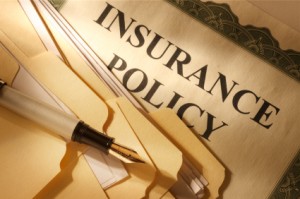 In our recent discussions with homeowners, it has been brought to our attention that homeowners are under insured. People who purchase a home must have insurance. If you do not want to purchase insurance, then the bank will force a policy on your home. You may think that this is easier, but the bank will get the absolute cheapest policy on your home and if a storm or natural disaster is to hit, you will not be covered.
In our recent discussions with homeowners, it has been brought to our attention that homeowners are under insured. People who purchase a home must have insurance. If you do not want to purchase insurance, then the bank will force a policy on your home. You may think that this is easier, but the bank will get the absolute cheapest policy on your home and if a storm or natural disaster is to hit, you will not be covered.
The first time people actually read their policy is generally after a loss. They discover what is and what isn’t covered. In addition to windstorm damage, for which coverage varies according to location, and flood insurance, which is purchased separately and is required by most mortgage lenders for homes in flood-prone areas, homeowner’s insurance cover many situations that can affect you.
Damage to the dwelling and the contents could be the biggest unexpected disaster awaiting a homeowner who has less coverage then needed. Most policies provide a stated maximum amount of coverage for the dwelling and another amount for contents.
For Dwelling Coverage, it is based on replacement cost, which means that in the event of a total loss to your residence, the policy will only provide reimbursement, up to the policy limit, to replace the structure. A homeowner should buy enough insurance to completely rebuild their home. This is known as replacement cost value. (This amount may not be the home’s actual market value or what the homeowner originally paid for the home.)
In order to figure out how much insurance to purchase for y our home, an accurate appraisal of the home for the replacement cost should be made. Most insurers recommend or even require that a homeowner insure the dwelling for 100% of its full replacement value. Depending on the type of home that you have, some features may not be replaceable in reference to workmanship, materials or practical costs. It is important to discuss these items with the insurer and/or agent.
Coverage for personal property is different. For personal property, policies provide actual cash value coverage for contents which includes depreciation, or full value contents without depreciation. Actual cash value means that if a power surge blows out a 7-year-old television set, the homeowner should know what to expect. Unlike full value contents coverage, which would basically provide you with a brand new television, actual cash value only permits the insurance company to calculate the useful life of the item and then depreciate the item to its present value. A depreciated television from 7 years ago would be insured for only a fraction of what it had cost originally. Homeowners may want to consider Replacement Cost Coverage to be sure that the contents are sufficiently insured.
Homeowners should purchase additional coverage for items that would ordinarily be subject to loss limitations, in addition to making sure that you are covered for replacement rather than actual cash value
In addition to making sure that contents are covered for replacement cost rather than actual cash value, homeowners should purchase additional coverage for items that would ordinarily be subject to loss limitations. Practically all policies cover contents loss up to the policy limit for items that include furniture, clothing, toys, accessories such as lamps and other items which are used for decor. Precise limitations are set in the policy for high-cost items such as jewelry, fine art, furs, electronics, collectibles, oriental rugs and antiques. If a thief comes in and steals a two-carat engagement ring, it will not be covered well enough without what is commonly known as a personal property rider to cover specific, costly items.
Liability Coverage
Liability insurance is very important to a homeowner’s coverage because it helps protect the owner and the family from financial disaster if someone files a claim against the homeowner’s policy, sues the homeowner or if the courts hold the homeowner legally responsible for someone else’s injury or property damage. The standard liability limit for most policies is $100,000, but many people believe that additional protection is needed , especially if the homeowner has sizable assets.
For a small increase in premium, an additional $300,000 to $500,000 may be obtained. Liability coverage protects in three ways: Personal liability, damage to the property of others, and medical expenses for injury to others.
Another way to protect one’s assets is to consider an Umbrella Policy which usually adds $1 million (or possibly more) in excess liability coverage to the homeowner’s property and automobile insurance policies. It also covers claims excluded from most basic policies such as libel, slander, defamation and mental anguish.
For example, most policies provide liability coverage that covers not only accidents that occur on the insured property but accidents that occur elsewhere. If the family dog bites a neighbor in front of another neighbor’s house, for example, the dog owner’s homeowner’s policy will usually compensate the neighbor for injuries and necessary medical expenses.
Theft Off Premises
Most policies automatically insure against the loss of personal property even if that property is not on the insured premises when it is lost. If one goes to the airport with several suitcases and they are stolen, this is probably covered. Talk with your agent and/or your insurance company for details.
Additional Living Expenses
Another automatic benefit of which many homeowners are unaware is coverage for living expenses if the covered premises is damaged to the point of being uninhabitable. Not only should the policy pay for the cost to repair the damage to the dwelling, but it should also reimburse the homeowner for the additional expenses of living elsewhere while the repairs are being made.
What Should A Homeowner Do To Be Prepared?
How does someone find out what is and what is not covered? Read the policy carefully. It’s not likely to be fun reading, but the good news is that if one reads and understands his or her policy before it is needed, this knowledge may save unexpected financial losses should a problem occur. It is always best to talk with one’s insurance agent or the company that issued the policy for details.
Understanding your homeowners insurance policy is best handled before a claim is made. In the case of the contents, an inventory of items room by room is important to have with information such as the date purchased, serial number, the original cost of each item and a brief description. Video tape or still photos is very helpful along with the inventory. These items should be stored in a safe place such as a safety deposit box in a bank or savings and loan institution and not in the home because if the home is destroyed, the chances are the inventory and related photos or tape may also be destroyed.
- Published in Blog
It’s b ad enough that you suffered a loss to your home. You have waited months to get a payment from your insurance carrier. Now that the check has finally come, your mortgage company is listed on it. The reason why this happens is because the mortgage company has interest in your property. They want to make sure that the money that the insurance company has paid you, is being applied to your repairs. You will have to contact your mortgage company directly and ask to speak to a loss draft specialist. The specialist will provide you with a claim package. In this claim package you will need to provide the mortgage company with the insurance adjusters summary showing the breakdown of the settlement you received. You will also need to provide them with the contractors information along with their conditional waiver of lien, invoice, and W9 so that the mortgage company can issue a payment directly to the contractor. Once the contractors have been paid in full, then the mortgage company will release any remaining funds to you. Depending on the status of your loan, each mortgage company might do this process slightly different. Some companies will just sign off on the check and give it back to you and some will hold it and disburse 1/3’s. The mortgage process if extremely time consuming and delays an insured with getting their repairs complete. Before you begin this tedious process with your mortgage company, contact All American Public Adjusters, Inc to advise and assist you. If your documentation is filled out incorrectly or if you do not have the proper estimate, your claim check will be significantly delayed.
ad enough that you suffered a loss to your home. You have waited months to get a payment from your insurance carrier. Now that the check has finally come, your mortgage company is listed on it. The reason why this happens is because the mortgage company has interest in your property. They want to make sure that the money that the insurance company has paid you, is being applied to your repairs. You will have to contact your mortgage company directly and ask to speak to a loss draft specialist. The specialist will provide you with a claim package. In this claim package you will need to provide the mortgage company with the insurance adjusters summary showing the breakdown of the settlement you received. You will also need to provide them with the contractors information along with their conditional waiver of lien, invoice, and W9 so that the mortgage company can issue a payment directly to the contractor. Once the contractors have been paid in full, then the mortgage company will release any remaining funds to you. Depending on the status of your loan, each mortgage company might do this process slightly different. Some companies will just sign off on the check and give it back to you and some will hold it and disburse 1/3’s. The mortgage process if extremely time consuming and delays an insured with getting their repairs complete. Before you begin this tedious process with your mortgage company, contact All American Public Adjusters, Inc to advise and assist you. If your documentation is filled out incorrectly or if you do not have the proper estimate, your claim check will be significantly delayed.
Do you think its fair for a mortgage company to hold onto your settlement check?
Have you ever had a good/bad experience with your mortgage company?
All American Public Adjusters, Inc have the expertise and knowledge with claim processing. We can guide you in the right direction. Let us know what you experienced and let’s work together to resolve these issues. Call us today!
[footer1]
- Published in Blog
- Published in Blog
Living in a house next to the water can be serene and beautiful, but only if you have intentionally chosen that location! Flood damage can be one of the most devastating experiences that a homeowner can go through. Water is a powerful force and can cause a lot of damage and literally wash away all your belongings and investments. Just the smallest amount of flooding can result in large costs, for those with flood insurance, getting your claim paid can be a complex issue. When your belongings and investment, your home, is on the line its time to hire a professional who can take of the claim filing process and take over for you ensuring that your investments will not be lost.
Hire an Expert Flood Claim Specialist
When dealing with the aftermath of flood damage, you need an experienced and knowledgeable Public Adjuster. Not having a public adjuster represent you in the event of any damage to your home is similar to not having an attorney represent you in legal matters. Insurance Companies hire the best to protect their assets. SO SHOULD YOU!
Contact All American Public Adjusters Inc. today, and let us maximize the value of your insurance claim. Don’t fight the insurance companies alone. All American Public Adjusters Inc is one of the most reputable Adjusting firms in the Nation and has extensive experience dealing with Insurance Companies. Contact us today and allow us to help you get the money you deserve!
[representyouinsurancepolicies] [footer1]- Published in Blog
A pipe break due to frozen or improperly installed pipes can be a very frustrating issue to deal with. Does your policy cover pipe breaks? What is the deductible that you will have to pay? Which of your personal affects can be recovered and which are lost? These are just some of the questions you have to ask yourself before you begin the process of filing a claim, which in itself can be a tedious and time consuming process! The best decision you can make in dealing with a pipe break is to contact a Public Adjuster. All American Public Adjusters is licensed and very experienced in dealing with Insurance Companies to ensure you get the assistance you deserve. We will evaluate your property and provide the proper estimates at no cost to the homeowner. We have extensive experience which we utilize when negotiating with your insurance company to achieve a maximum settlement. All American Public Adjusters, Inc will assist you the moment a pipe break occurs. A policy holder generally has 14 days to report a loss to your insurance carrier. Don’t fight the insurance companies alone! Call All American Public Adjusters, Inc to assist you today. (800.501.1230)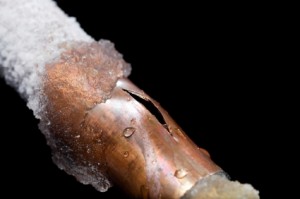
- Published in Blog


